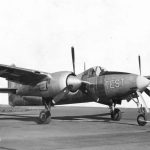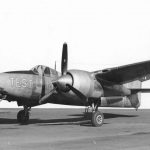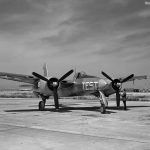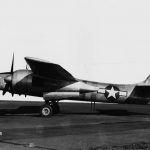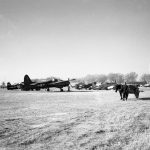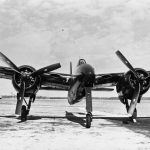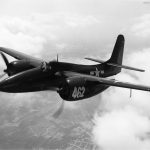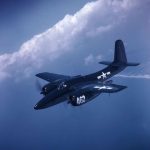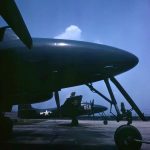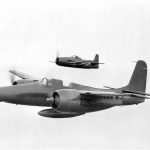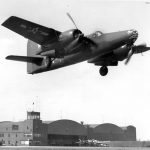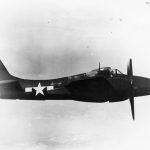Prototype which was located at Grumman’s factory airfield in Bethpage, New York, was preparing for its inaugural flight. The aircraft had propeller spinners installed, which were later removed after initial flight-testing.
In late 1943, Bob Hall, the designer at Grumman, piloted the initial prototype XF7F-1, with the BuNo 03549, during some of its early testing missions.
Prototype XF7F-1 1943 5
XF7F-1 1946
XF7F-1 with folded wings
XF7F-1 23 December 1943
XF7F-1 in flight 3
XF7F-1 with tail hook extended
John Clifton and his F7F-1
XF7F-1
Grumman XF7F-1 03549 1943
XF7F-1 03549 Bethpage 12 November 1943
F7F-2N of the VMF(N)-533 Nan Yuan Field, Peiping China October 1945
F7F front view
F7F and F6F in flight
F7F-3 80462 Long Island 1945
F7F-3 fighters over Cherry Point January 1945
F7F Cherry Point March 1945
F7F-2N 1945
F7F-3 80462 1945 3
BuNo 80462 was piloted by Grumman test pilot ‘Corky’ Meyer during its testing phase
F7F-3 Tigercat 80462
F7F-3 80460
F7F-3 80458, Grumman Bethpage 4
F7F-3 80458 3
F7F-3 80458,Grumman Bethpage airfield 2
F7F-3 80458
F7F-3N Tigercat and F8F
Night fighters F7F-3N N3 and N10 of the VMF(N)-533 1947
F7F-3 80359 of the VMD-254 April 1945
Single-seat day fighter F7F-3 80452, Grumman factory airfield at Bethpage, New York
Night-fighter F7F-2N of the VMF(N)-533 Nan Yuan Field China October 1945
F7F-3N 80549
F7F-3N N4
F7F-3N Tigercat with nose art
F7F-3N Tigercat 2
F7F-2N in flight
F7F-2N 80261 2
F7F-2N 80261
F7F-2 “white 24”
BuNo 80291 underwent its first carrier deck trials aboard the USS Shangri-La. Although these trials were successful, the Tigercat had a restricted shipboard career.
Crashed F7F after belly landing
Tigercat was the first twin-engined fighter aircraft design to enter service with the United States Navy. Designed for the new Midway-class aircraft carriers, the aircraft were too large to operate from earlier decks. Although delivered to United States Marine Corps combat units before the end of World War II, the Tigercat did not see combat service in that war. Most F7Fs ended up in land-based service, as attack aircraft or night fighters; only the later F7F-4N was certified for carrier service. They saw service in the Korean War and were withdrawn from service in 1954.
Toral production: 364
